Cushion Selection

Cushions can be confusing! Of the hundreds of cushions available on the market made with different materials and different designs … how do you know which one is right for you or your participant? Understanding marketing claims and the engineering behind each cushion adds to the challenge. Choosing a cushion can be overwhelming … but you can now use ISO Testing results in addition to evidence-based practice and your own clinical experience to guide cushion selection and prescription.
Implementing ISO Standards into Evidence-Based Practice
Contributing elements of evidence-based practice include material science, the client perspective, clinical expertise and decision making, research evidence and clinical practice guidelines. ISO testing and performance metrics serve as a crucial bridge between manufacturers and clinicians, providing a common language for understanding cushion effectiveness. This shared framework supports informed decision-making, aligns clinical recommendations with manufacturing innovations.
💡 ISO Testing
The International Organization for Standardization (ISO) is a global network that publishes standardised procedures, processes, and test methods. These standards, agreed upon by experts, serve as a formula for best practices, defining excellence and setting consistent benchmarks.
Permobil strives to not only meet the ISO standards but exceed them when designing and innovating for individuals. ISO standardised tests are voluntary and Permobil chooses to participate in these standards to ensure our products are supported by science.
Performance Metrics
![]()
• Standardised tests developed in accordance with ISO
• Indenters (buttock models) are evaluated in a lab test
• These tests provide a baseline for cushion performance
• There are not any pass/fail criteria (except immersion)
• Performance metrics make up one consideration when prescribing cushions
The National Pressure Injury Advisory Panel's (NPIAP) Clinical Practice Guideline (CPG) for the prevention and treatment of pressure injuries was published in 2019. Over 250 international experts reviewed evidence of over 3500 peer reviewed research studies.
CPG offers a clinical perspective that informs the development and application of ISO tests. It includes recommendations on the role of support surfaces, which are crucial for deriving performance metrics.
Based on the CPG, Permobil created The Pressure Management Guide, an extensive resource to better understand the role of support surfaces and wheelchair systems for pressure management. Short on time? Check out the The Wheelchair Seating Pocket Guide, a condensed resource to help select wheelchair seating components for pressure injury management.
You can find more resources at the bottom of the page.
Performance metrics assist in cushion selection by aligning with individual goals and needs, helping clinicians focus on the user without bias. These lab-based metrics should complement personal requirements and are not pass/fail tests or for ranking except immersion. Instead, they identify key cushion characteristics to meet individual priorities and functions.
To accurately interpret the dataset of 50 cushions from RERC, a Scientific Report has been released to enhance your understanding of the statistics. Cushions are categorised into lower, typical, and higher priority based on statistical thresholds such as median and percentiles, ensuring consistent representation from various manufacturers and designs. If you have specific goals in mind, you can refer to the relevant tests and consider trialing cushions that fall into the higher priority category.
The full report is available at the bottom of the page.

![]()
💡 Individual Remains at the Center
When using cushion performance metrics to determine a seating solution, the individual remains central to the prescription process. While these metrics primarily address skin protection and stability, a user-centric approach requires considering many other factors. One performance test or measure should never be used as a cushion selector tool. Remember, the results are the starting point, not the final answer!
Transparency
Rehabilitation Engineering Research Center (RERC) Data
We are deeply committed to transparency, recognising it as the foundation of trust. All testing was conducted by the RERC, an independent and reputable third-party facility, ensuring the reliability and impartiality of the results. These results are publicly accessible on the University of Pittsburgh’s website. For further details about a specific cushion, please refer to the corresponding code below to explore additional information.
Permobil has 8 cushions included in the Pittsburgh’s data for the ISO tests for Skin Protection and Stability & Balance.
RERC Data - Permobil Cushion ID
| Cushion | ID in Figures |
| Comfort Embrace | AZ |
| Comfort Express Comfort Foam | D |
| Comfort M2 | AG |
| Comfort M2 with Glide Wear | AH |
| ROHO Hybrid Select | L |
| ROHO MOSAIC | AA |
| ROHO QUADTRO SELECT High Profile | AV |
| ROHO Single Compartment Low Profile | BA |
| ROHO Single Compartment High Profile | AT |
*Please note, not all products may be available in your local area.
Skin Protection
A prioritised goal for individuals at high risk of pressure injury, utilising metrics including immersion, contact area, and off-loading for objective cushion comparison.
Stability & Balance
A key goal for individuals needing improved posture or function, using lateral stability and horizontal stiffness metrics to guide cushion selection for optimal balance and positioning.
Performance and Features of Permobil Cushions
*Please note, not all products may be available in your local area.
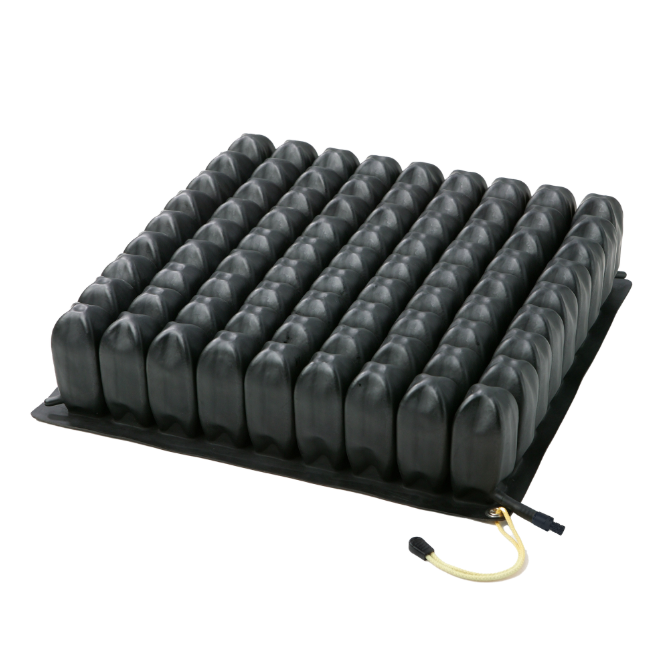
ROHO® Single Compartment High Profile
Higher priority
Contact area
Immersion
Offloading IT
Typical priority
Lateral Stability
Extra possible benefits
• 5 year expected lifetime• Good investment for long term needs
• Uses hydrostatic forces
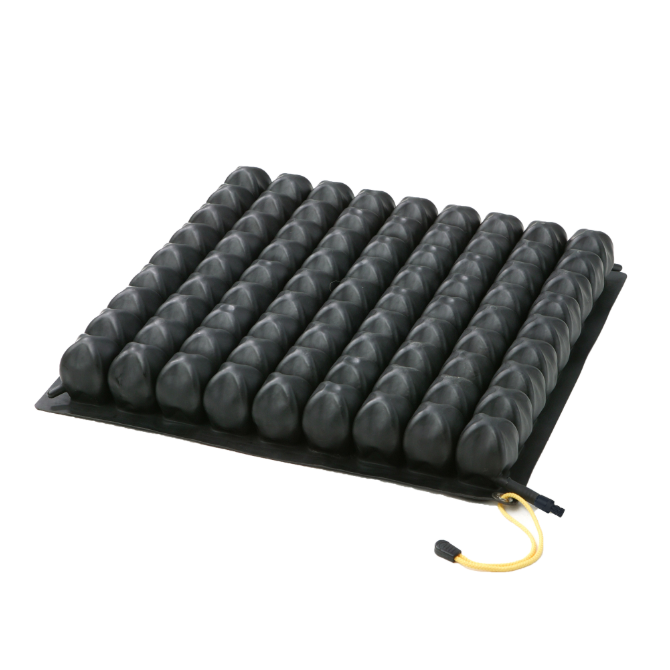
ROHO® Single Compartment Low Profile
Typical priority
Immersion
Contact area
Extra possible benefits
• 5 year expected lifetime• Uses hydrostatic forces
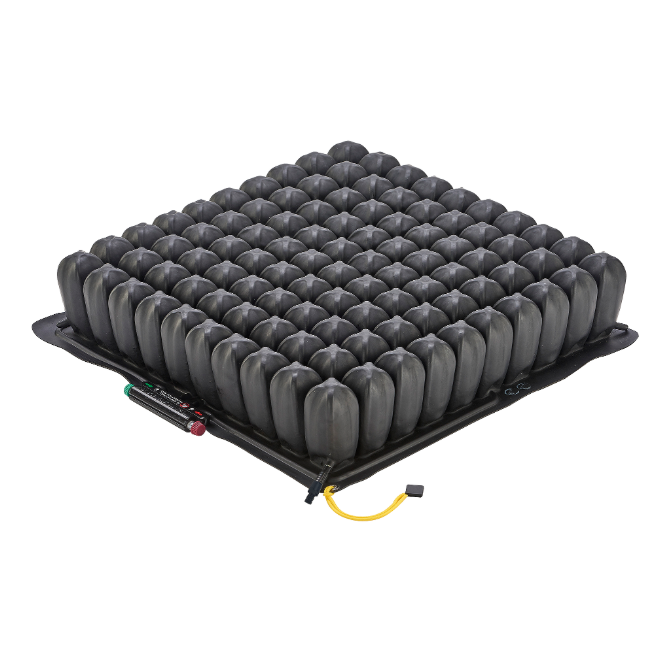
ROHO® QUADTRO SELECT® High Profile
Higher priority
Immersion
Contact area
Typical priority
Offloading IT
Lateral stability
Extra possible benefits
• 5 year expected lifetime• Positioning adjustability possible e.g. uneven hips
• Good investment for long term needs
• Uses hydrostatic forces
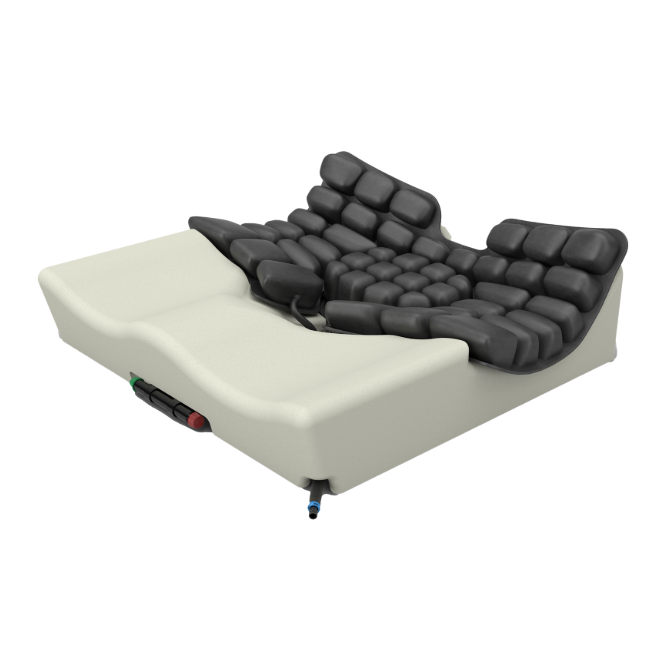
ROHO® Hybrid Select
Higher priority
Offloading IT
Lateral stability
Typical priority
Immersion
Contact area
Horizontal stiffness/
forward stability
Extra possible benefits
• 5 year expected lifetime• May support user transfers; firm front to push from
• Positioning adjustability possible e.g. uneven hips
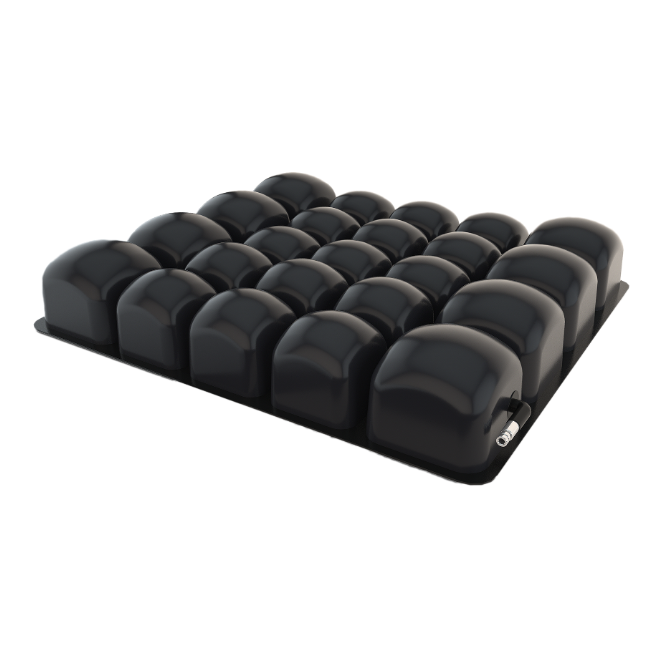
ROHO® MOSAIC®
Higher priority
Immersion
Typical priority
Contact area
Offloading IT
Horizontal stiffness/
forward stability
Extra possible benefits
• 5 year expected lifetime
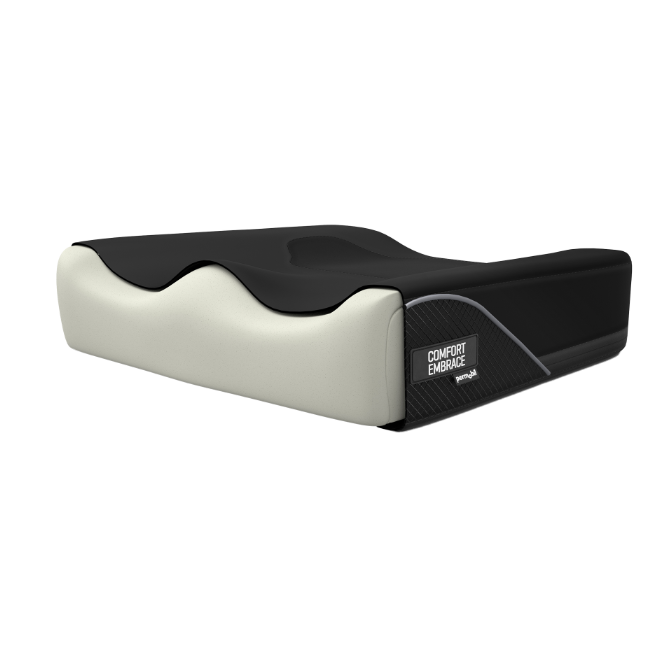
Acta-Embrace™ with GlideWear
Higher priority
Offloading IT
Horizontal stiffness/
forward stability
Typical priority
Immersion
Contact area
Lateral stability
Extra possible benefits
• May support user transfers; firm front to push from

Comfort M2 with GlideWear
Higher priority
Contact area
Immersion
Typical priority
Offloading IT
Lateral Stability
Extra possible benefits
• May support user transfers; firm front to push fromScientific Report: Guidance to individualized cushion selection based on performance metrics
This scientific report contributes to filling the gaps between clinical decision making, individual needs assessment and the lack of sufficient scientific evidence for cushion selection. Individuals’ needs are essential to be considered when selecting a cushion alongside performance considerations for skin protection and stability and balance. You can download the Scientific Report below.
Understanding Cushion Performance Metrics
This document provides the summary of the scientific report. It provides an overview of the ISO testing results and provides clinical examples. Download Understanding Cushion Performance Metrics below for a concise and functional guide to applying ISO Testing to your clinical practice.
Other Resources
International Clinical Practice Guidelines
Skin protection and preventing pressure injuries is important to every person with limited mobility.
The National Pressure Injury Advisory Panel's (NPIAP), European Pressure Ulcer Advisory Panel (EPUAP) and Pan Pacific Pressure Injury Alliance (PPPIA) Clinical Practice Guideline (CPG) for the prevention and treatment of pressure injuries was published in 2019. Over 250 international experts reviewed evidence of over 3500 peer reviewed research studies.
The CPG provides a clinical perspective that can be applied to the development and application of ISO tests. The CPG also includes recommendations such as prevention and treatment of pressure injuries, the etiology of the wounds and patient risk factors.
Data from the University of Pittsburgh’s Rehabilitation Engineering Research Center (RERC)
The University of Pittsburgh’s Rehabilitation Engineering Research Center (RERC) has been involved in the development of ISO standards for wheelchairs and wheelchair seating.
The Wheelchair and Cushion Standards group at RERC applied a subset of test methods (from the ISO 16840) and created a tool to explore the cushion performance data of their research. Of approximately 50 cushions from multiple manufacturers, the RERC researchers selected 10 cushions that are manufactured or distributed by Permobil Americas, to be included in the study. Permobil has chosen to identify the cushions and share these results publicly.
Pressure Management Guide
Wheelchair Seating Pocket Guide
Check out the The Wheelchair Seating Pocket Guide, a condensed resource to help select wheelchair seating components for pressure injury management.